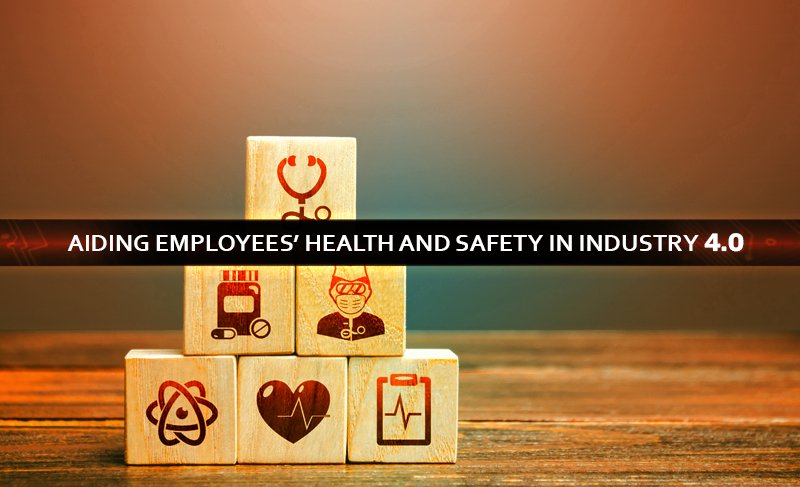
Aiding Employees’ Health and Safety in Industry 4.0
“Employees’ health and safety at the workplace is about maintaining safety standards for employees and creating a digitally enabled working environment for the employees that motivates them driving digital customer experience.”
The world has changed. It does not operate the same way as it used to be earlier. The COVID-19 pandemic has changed the ways of doing business; pushed the organizations to adopt innovative procedures to carry out businesses, and provided the corporates with all new digital transformation.
The digitized ways of businesses are prevailing all over.
Be it the manufacturing industry, where traditional manual companies are getting replaced by robotics arms, or the healthcare sector, where the digital online patients’ appointments have taken over the manual face-to-face appointments; the world has shifted to digital.
Initially, organizations faced the dilemma of investing in digital tools and technology due to uncertainty about the benefits of digitization. Still, as time spanned by, the investments in the digital expanded to a greater extent.
As the COVID-19 pandemic challenged almost every part of our global society; the magnitude at which the virus spread, securing employees’ health and safety at the workplace became more crucial.
The road to recovery and resilience from any calamity begins with patience coupled with the incredible technology to create and implement a robust risk-reduction strategy that ensures employees’ health and safety at the workplace and takes a holistic view of things in the most efficient ways.
The rising advent of emerging technologies such as interconnected smart devices; internet of things (IoT) data, and machine learning solutions has transformed all aspects of the business.
The same innovative technology enables organizations to reduce risk and safeguard their workers through multi-layered mitigation, containment, and reporting approach.
Elements of Employees’ Health and Safety:
According to recently conducted research, the global workplace safety market will reach USD 20 Billion by 2025.
This massive rise in the global market value of workplace safety attributes to the surge in demand for securing employees’ health and safety; which becomes even more significant in such uncertain pandemic times.
Moreover, the integration of Big Data and the use of safety data as a predictive tool for risk management and the introduction of new trends such as smart PPE, intelligent clothing; autonomous vehicles, and smart safety provide lucrative opportunities for maintaining workplace safety and standards for the employees.
Each organization deals with different safety standards for its employees’ health and safety, but overall safety standards differ slightly based on its operations and functions.
Risk Assessment:
Risk assessment is one of the crucial elements of any risk mitigation strategy. The same goes true while implementing employees’ health and safety procedures.
Organizations focus on risks and risks inductive factors, which are taken into consideration to design frameworks and guidelines for the employees’ health and safety at the workplace.
Training:
Training of employees also plays a broader role in successfully implementing their health and safety measures.
Once the guidelines and frameworks get designed; employees receive training on how to follow the defined regulations and respond in the hours of calamities.
Improvement Measures:
After the risk assessment and the training part, there are chances that a few unidentified risks remain at the core of the business operations, which makes needs improvement measures to eliminate the existing risks and create a roadmap for the risks that might occur in the future.
In such instances, improvement measures become the next most significant element of employees’ health and safety framework.
EHS Policies:
EHS policies form the core outline of health and safety at organization and individual levels, standing for the environment, health, and safety.
Organizations implement EHS policies to ensure effective implementation of health and safety standards at the workplace that creates a safe and healthy working environment for the employees.
Furthermore, when paired with digitization, guidelines and frameworks for employees’ health and safety lead to an enhanced digital customer experience.
Leader Group’s QHSE (Quality, Health, Safety, Environment) consultation helps organizations to establish; implement, maintain, and monitor Quality, Health, Environment, and Safety standards in a digitally-driven way.
With the rise in digitization, organizations, when embedding their operations with digital; reap more benefits, which has undoubtedly shown favorable results in implementing QHSE frameworks.
Leader Group’s QHSE consultation helps organizations achieve zero incidents, secure and healthy working environments, and safe, high-quality, and environmentally responsible products and services.
Moreover, a few other benefits that Leader Group’s QHSE consultation possesses include improved internal management; improved customer satisfaction, and better quality products and services.
Conclusion:
Digital has become the new normal. Going digital and adopting digitized business practices is not a novice concept. It has existed for decades; however, with the emergence of the COVID-19 pandemic, the significance of digital practices has surged even more.
The guidelines and frameworks for employees’ health and safety at the workplace are integrated with digital to deliver an enhanced digital customer experience while ensuring a safe and secure working environment.
Leader Group’s QHSE consultation and digital tools ensure effective implementation of employees’ health and safety at the workplace.





